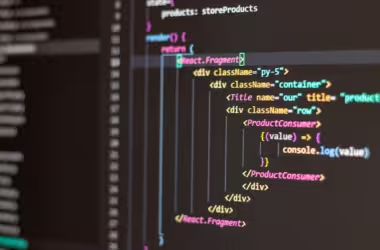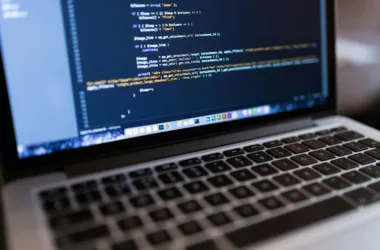The NFT marketplace has exploded in popularity, with sales surpassing a staggering $41 billion in the first quarter of 2023 alone. This digital asset revolution has created a surge in demand for user-friendly platforms where creators and collectors can interact, trade, and showcase their unique NFTs.
But building a successful NFT marketplace requires careful planning and a deep understanding of the technology behind it.
If you’re an entrepreneur captivated by the potential of NFTs and envision launching your own marketplace, this comprehensive guide is here to empower you. We’ll delve into the core concepts, explore crucial development considerations, and unveil the essential features that make your platform stand out in a competitive landscape.
Before we embark on the development journey, let’s establish a clear understanding of NFTs and the vibrant marketplace ecosystem:
NFTs Explained
Imagine a digital certificate of ownership for unique digital assets, like artwork, music, collectables, or even virtual real estate. Unlike fungible tokens (cryptocurrencies like Bitcoin), each NFT is one-of-a-kind and cannot be replicated, making them valuable for representing ownership of digital creations.
Marketplace Functionality: Think of NFT marketplaces as online hubs specifically designed for buying, selling, and trading NFTs. These platforms offer functionalities like:
Minting: The process of creating and deploying NFTs onto a blockchain.
Listing and Auctioning: Users can list NFTs for a fixed price or set up auctions to attract higher bids.
Buying and Selling: Users can browse listings, purchase NFTs using cryptocurrency, and securely store them in their crypto wallets.
Marketplace Types
The NFT marketplace landscape offers a variety of options, catering to diverse audiences and interests. Here are some common models:
Open Marketplaces: Anyone can create and list NFTs, fostering a wider selection but potentially lower quality control.
Curated Marketplaces: Focus on specific niches or maintain high standards by requiring artist applications and approvals.
Niche-Specific Marketplaces: Cater to specific industries, like sports memorabilia, digital art, or gaming assets.
Charting Your Course: Key Considerations for Development
Building a successful NFT marketplace requires careful planning and strategic decision-making. Here are some key factors to consider:
- Target Audience: Who are you building the platform for? Identifying your target user base (artists, collectors, specific industries) helps tailor features and functionalities to their needs.
- Blockchain Selection: The underlying blockchain technology is the backbone of your marketplace. Popular choices like Ethereum, Solana, and Binance Smart Chain each offer advantages and disadvantages in terms of scalability, security, and transaction fees. Choosing the right blockchain is crucial for user experience and platform sustainability.
- Smart Contract Development: Smart contracts are self-executing contracts stored on the blockchain. They play a vital role in managing NFT ownership, facilitating transactions, and ensuring secure execution of marketplace functionalities. Investing in secure and well-tested smart contracts is paramount.
- Security Features: The security of user assets is paramount. Implementing robust security measures like user authentication, access control, and data encryption protects users from theft and fraud.
Building Your Platform: Essential Features and Functionalities
Now that you have a solid foundation let’s explore the features that bring your NFT marketplace to life:
- User Interface (UI) and User Experience (UX): A user-friendly and intuitive interface is essential. Users should be able to navigate the platform seamlessly, browse NFTs effortlessly, and complete transactions with ease. Invest in a clean and intuitive UI/UX design that prioritizes user experience.
- Wallet Integration: Users need a secure way to store and manage their NFTs and cryptocurrency. Integrating popular crypto wallets like MetaMask or Coinbase Wallet enables users to connect seamlessly and interact with your marketplace.
- Minting Functionality: Provide a smooth process for creators to upload their digital assets and convert them into NFTs on the chosen blockchain. User-friendly minting tools empower creators to participate actively in the NFT ecosystem.
- Listing and Auctioning: Allow users to list their NFTs for a fixed price or set up timed auctions to attract higher bids. A flexible listing system caters to diverse selling strategies.
- Search and Discovery Features: Help users find the NFTs they desire by implementing robust search filters and browsing functionalities. Categorize NFTs by type, artist, collection, or other relevant criteria to enhance discoverability.
- Marketplace Fees and Revenue Options: Establish a clear fee structure for using your platform. This could include listing fees, transaction fees, or a commission on sales. Explore diverse revenue streams to ensure the long-term sustainability of your marketplace.
Beyond the Basics: Advanced Features to Consider
Standing out in the crowded NFT marketplace landscape requires innovation. Here are some advanced features to consider for your platform:
- Social Features: Foster a sense of community and engagement by integrating social elements like chat rooms, forums, or a review system. Allow users to connect with artists, discuss NFTs, and build a vibrant marketplace ecosystem.
- Multi-chain Functionality: Expand your reach by supporting multiple blockchains. This enables users to trade NFTs built on different blockchains, enhancing user choice and asset interoperability. However, ensure a seamless user experience for navigating and interacting with NFTs across various blockchains.
- Royalty Management: Implement a system for creators to earn royalties on secondary sales of their NFTs. This incentivizes creators to contribute high-quality work and fosters a sustainable creator economy within your marketplace.
- Governance Mechanisms: Consider implementing governance tokens that grant users voting rights on platform decisions like fee structures or future development plans. This fosters a sense of community ownership and empowers users to shape the future of your marketplace.
Development Timeline and Cost Estimation:
Developing an NFT marketplace requires a team of skilled developers, designers, and blockchain experts. The development timeline and cost can vary significantly depending on several factors:
- Marketplace Complexity: Simple marketplaces with basic functionalities will take less time and resources to develop compared to feature-rich platforms with advanced functionalities.
- Chosen Technologies: The specific blockchain technology, programming languages, and development frameworks used will influence development time and costs.
- Team Expertise: The experience and skill set of your development team will play a crucial role in project efficiency and overall cost.
It’s challenging to provide a one-size-fits-all estimate. However, for a basic NFT marketplace with core functionalities, development costs can range from tens of thousands to hundreds of thousands of dollars. For complex platforms with advanced features, expect costs to potentially reach millions of dollars.
The best approach is to consult with experienced NFT marketplace development teams who can provide a more accurate estimate based on your specific requirements.
Conclusion: The Future of NFT Marketplaces
The NFT market is still in its early stages, with continuous evolution and innovation shaping the future. As an aspiring NFT marketplace developer, you’re entering a dynamic and exciting space.
This guide has equipped you with the essential knowledge to navigate the development process and build a robust platform. Remember, the NFT landscape is constantly evolving. Stay informed about emerging trends, user demands, and technological advancements to stay ahead of the curve.
Are you ready to embark on your NFT marketplace development journey? Conduct further research, connect with experienced development teams, and translate your vision into reality. The potential to shape the future of NFT trading awaits!






